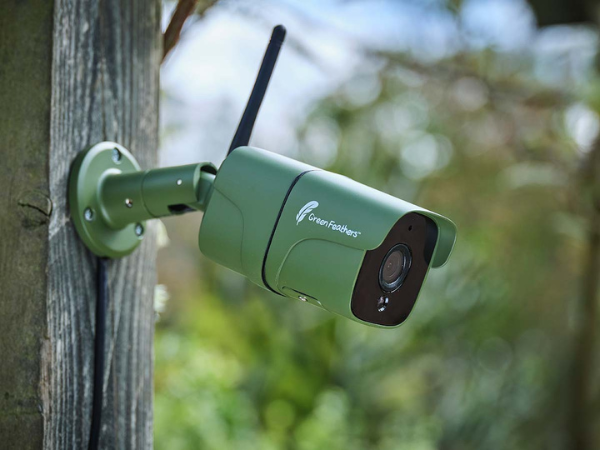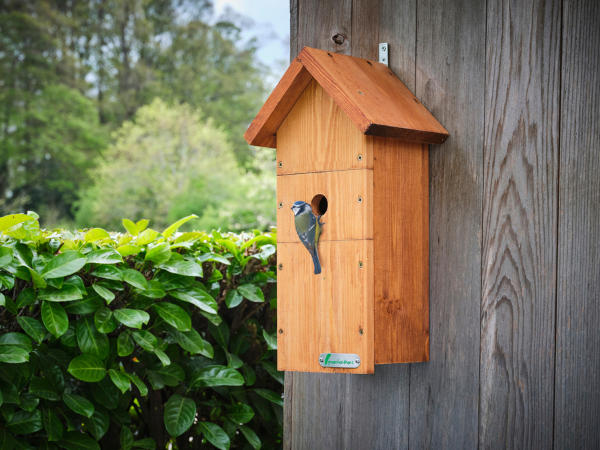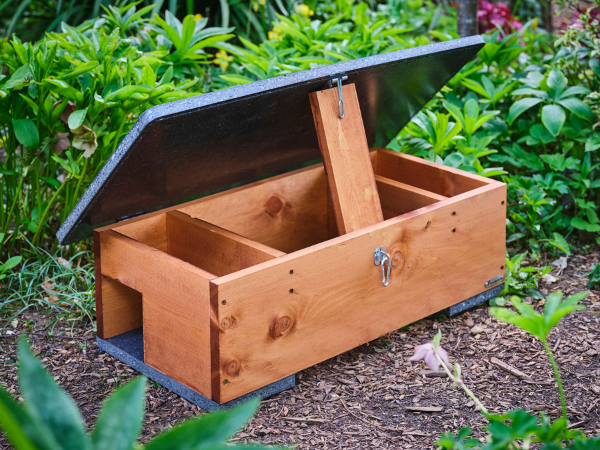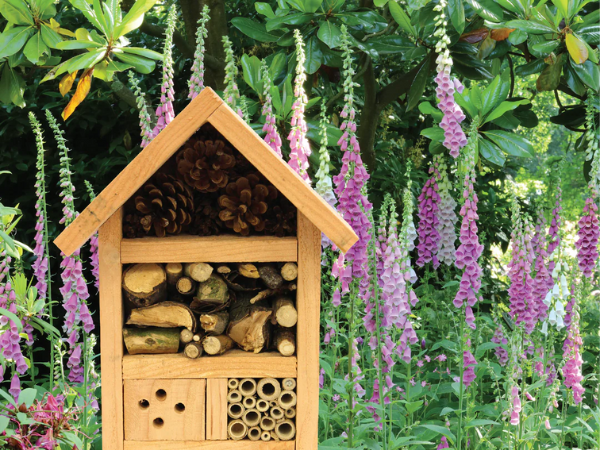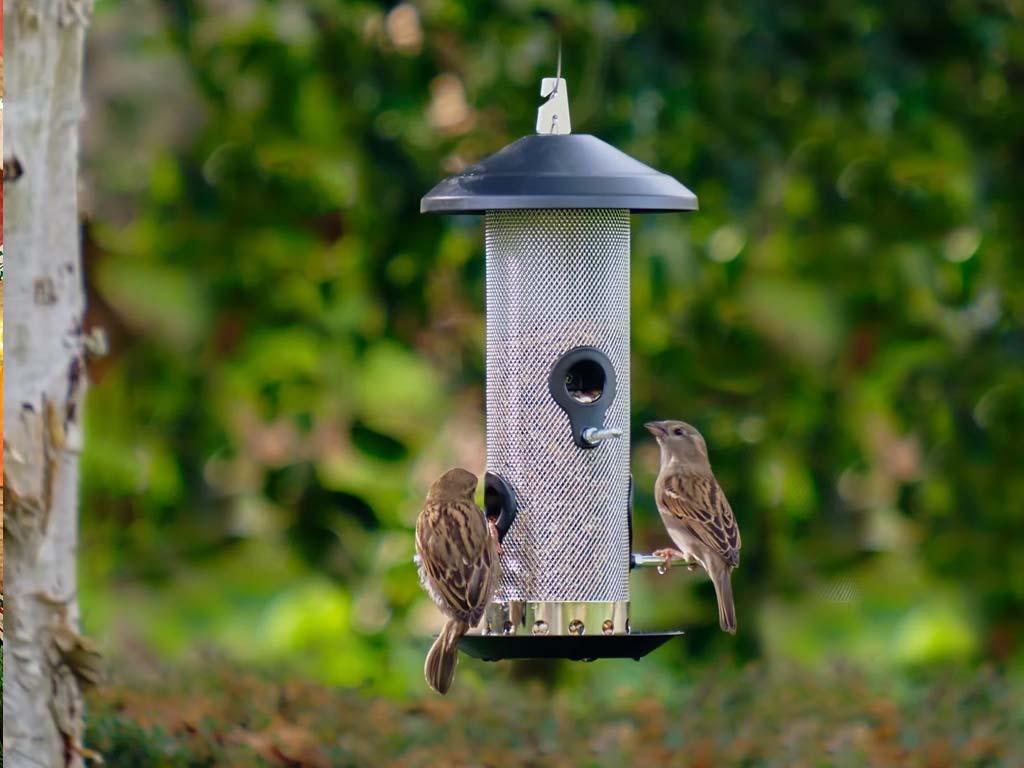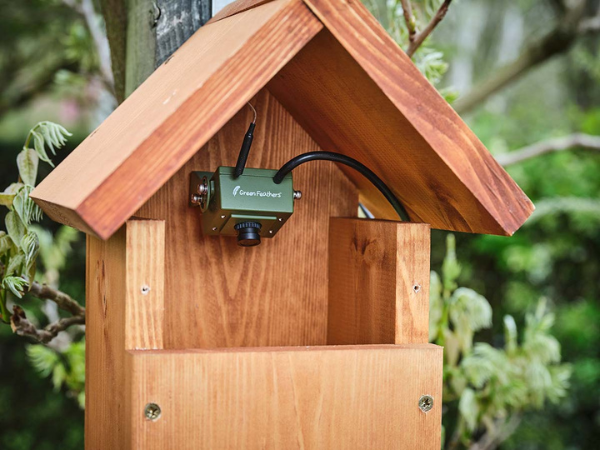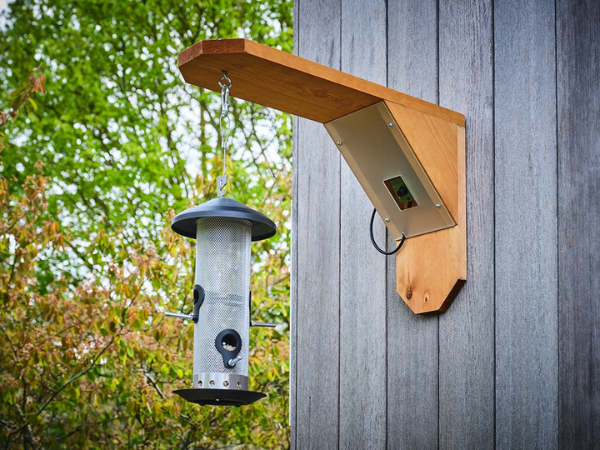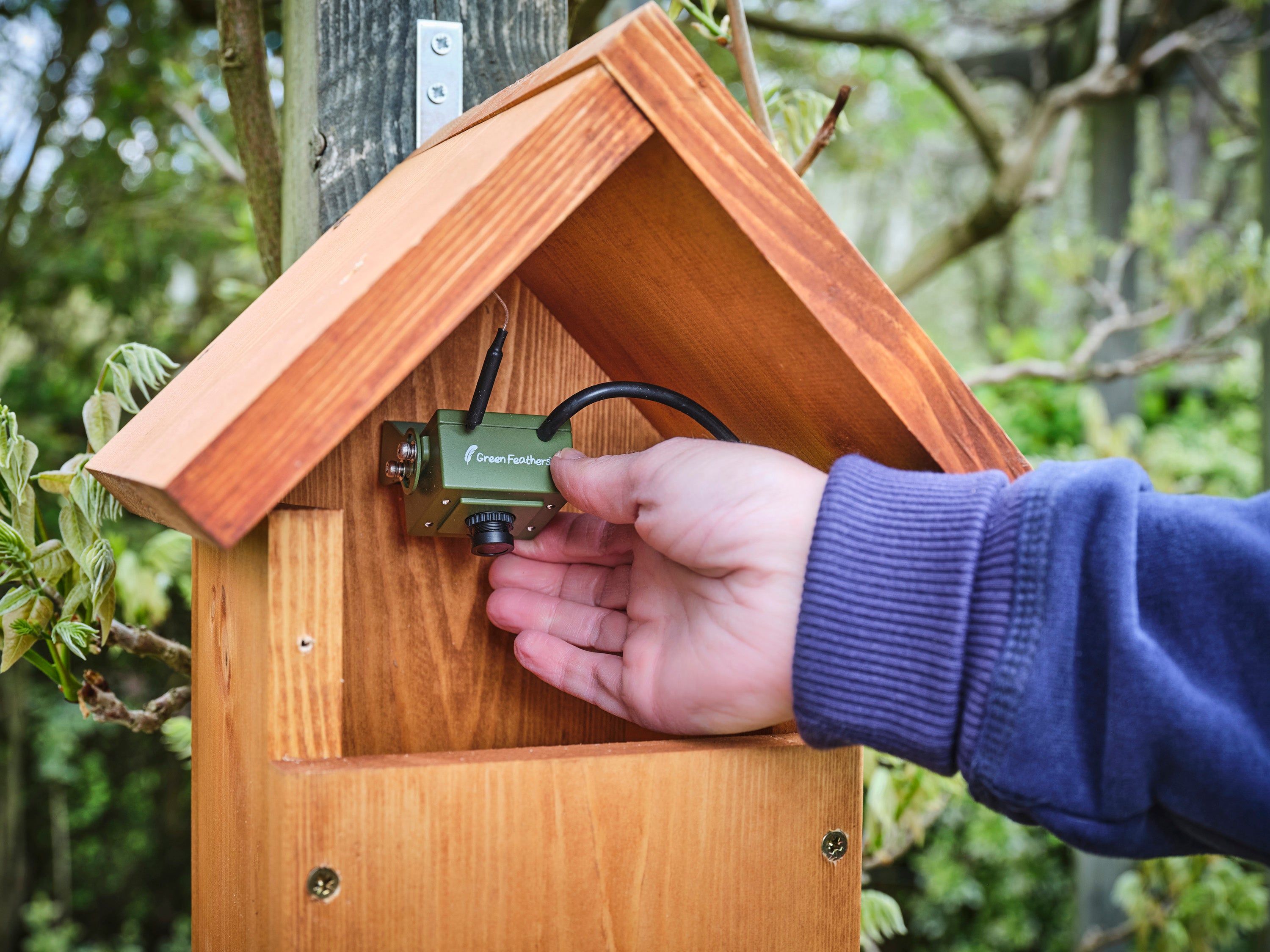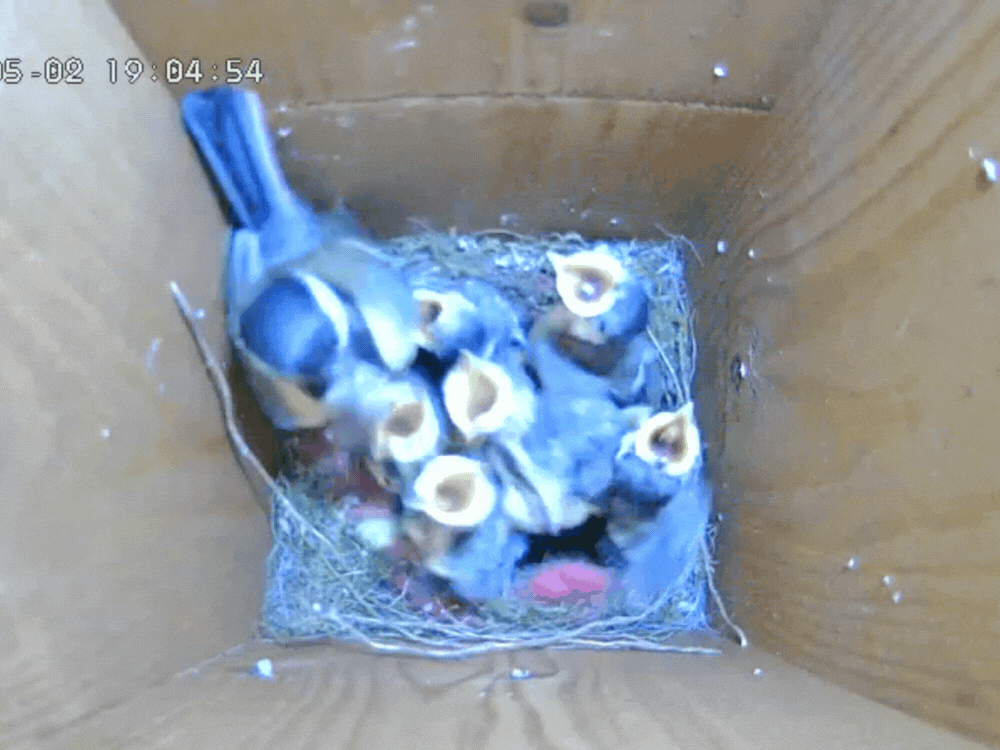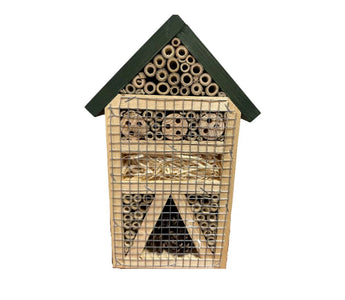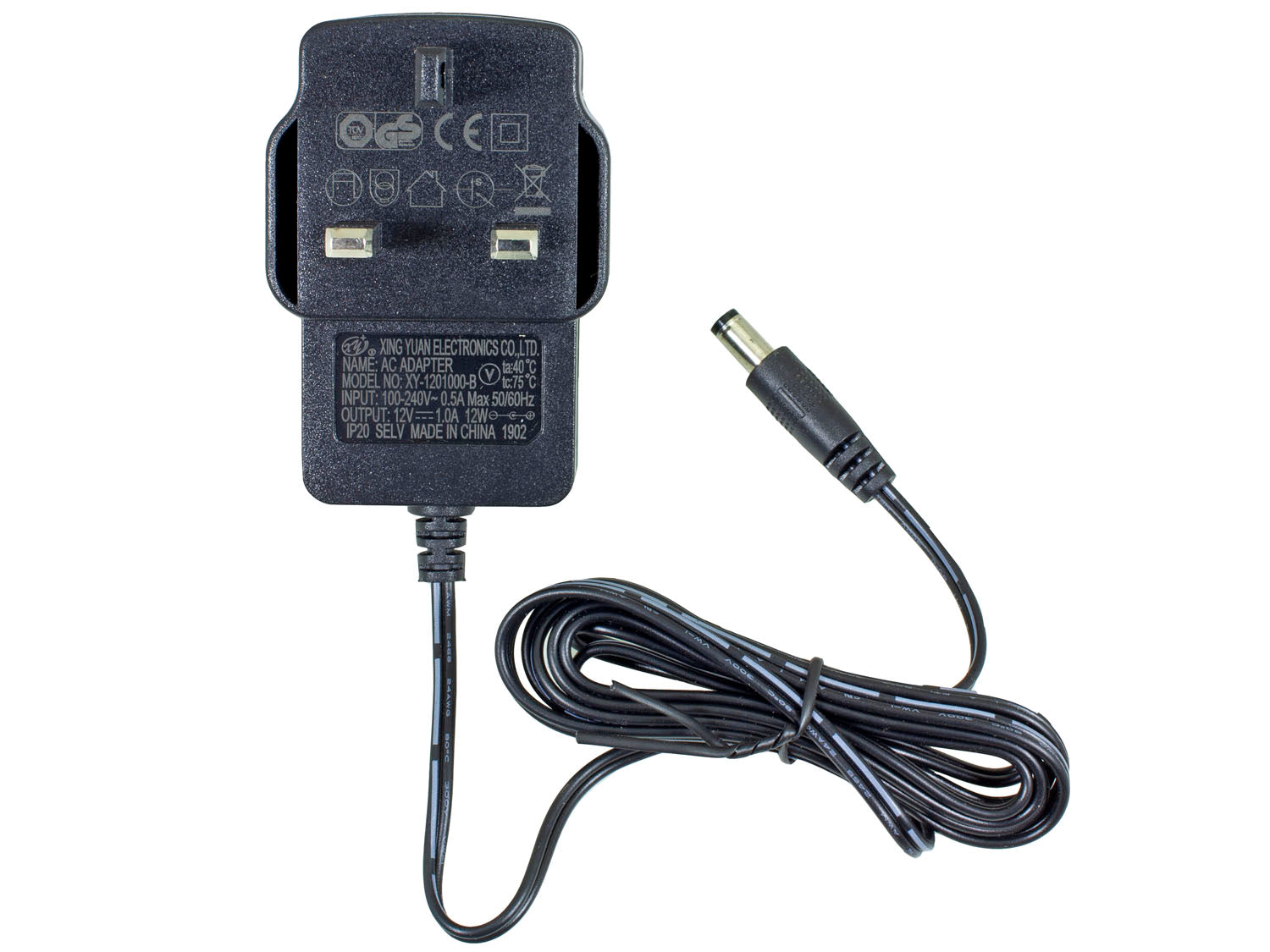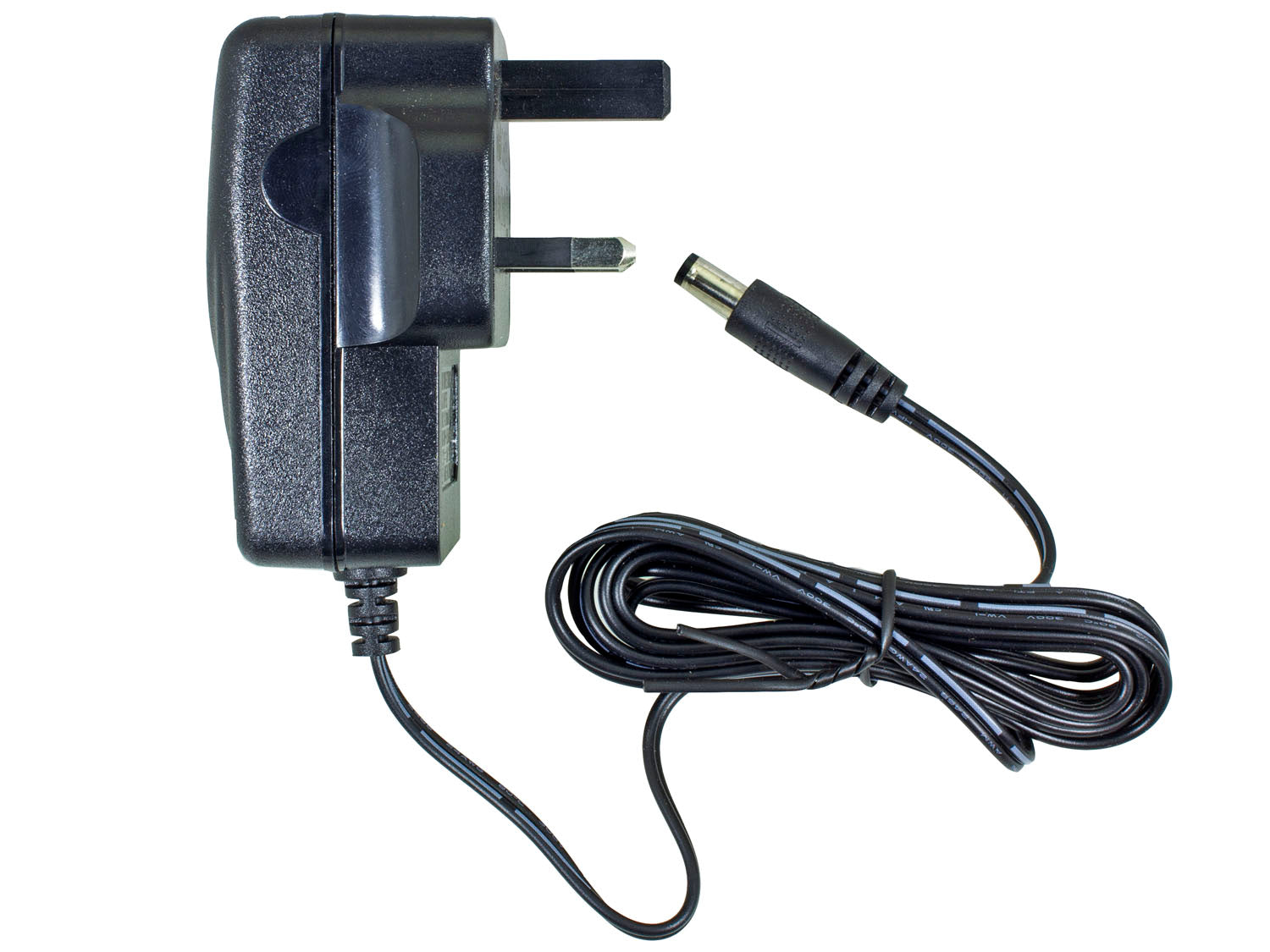We all love the thought of a wildlife-friendly garden to create a safe haven for all creatures, big and small. The best wildlife-friendly gardens don’t just have bird boxes and hedgehog habitats for your flying friends and prickly pals - they have bug hotels for the minibeasts roaming around!
Keep reading as we show you how easy it is to create a bug hotel from scratch, with natural and recyclable materials you can find in your own garden.
Benefits of bug hotels for kids and nature
Bug hotels are the perfect addition to any garden. From boosting the biodiversity in your garden to teaching your children about their local ecosystem, bug hotels have a wide range of benefits for everyone.
1. Biodiversity boost
Bug hotels attract a variety of insects, contributing to increased biodiversity in your garden, local environment and ecosystem.
2. Natural pest control
Many insects housed in bug hotels are beneficial predators that help control populations of harmful pests like aphids or caterpillars, reducing the need for chemical pesticides in your garden.
3. Pollination support
Certain insects, such as bees, butterflies and moths, are effective pollinators. Bug hotels provide shelter for these pollinators, supporting the health of plants in the area.
4. Education and observation
Bug hotels offer a unique opportunity for educational purposes, allowing children to observe insect behaviour up close and learn about different species and their roles in the ecosystem.
5. Conservation
By providing habitat for insects, bug hotels contribute to conservation efforts - particularly for species that may be facing habitat loss due to urbanisation or agricultural practices.
6. Garden health
A healthy population of insects contributes to overall garden health by promoting soil aeration, decomposition, and nutrient cycling. This is perfect if you fancy planting fruits, vegetables or just some pretty flowers around your garden.
7. Aesthetic appeal
Bug hotels can be designed in creative and visually appealing ways, adding aesthetic value to your garden.
8. Seasonal interest
Different insects may inhabit bug hotels at various times of the year, providing ongoing interest and activity for young nature enthusiasts throughout the seasons.
9. DIY and sustainability
Many bug hotels can be constructed using recycled or repurposed materials, making them environmentally friendly and accessible for easy DIY projects - perfect for a simple outdoor activity with the kids.
Materials needed to make a bug hotel
Bug hotels should be primarily made with natural materials found in your garden, to effectively support the minibeasts in your local environment. These could include things such as:
- Sticks
- Leaves
- Pine cones
- Moss
- Grass
- Bark
However, you can also add in other materials to help with the overall construction of your bug hotel, like:
- Bamboo sticks
- Reeds
- Wood pallets
- Chopped wood
- Wooden planks
- Bricks
- Stones
- Cardboard
- Tin cans
- Old roof or kitchen tiles
Glue is fine to use to build your bug hotel, as long as it is non-toxic and dry before you invite your little friends to pay a visit. However, having an adult on hand to nail the wood together would make the bug hotel more durable.
How to make a bug hotel: Step-by-step instructions
Now you have all your materials ready, it’s time to build your bug hotel. Follow these instructions loosely, depending on how much access you have to different materials and how independently your children can build it.
Step 1: Choose a suitable location for your bug hotel
Have a look around your garden for where insects are already hiding. You’ll find different minibeasts in different areas, such as woodlice in cool, damp conditions and bees in sunny spots near flowerbeds.
Find a spot that would appeal to the majority, on level and firm ground. Be sure to avoid placing a bug hotel near your vegetable garden (if you have one), as this could attract slugs, hedgehogs and badgers.
Step 2: Build the structure of your bug hotel
To build a bug hotel that is going to stand the test of time, you need to create a strong, stable framework that is going to hold it all together. This should be no taller than a metre high, for risk of falling. Wooden pallets are a great, pre-structured choice for this frame - layered on top of bricks to create different ‘floors’ for your bug hotel.
However, if you don’t have these to hand, you create a smaller bug hotel with pieces of wood glued or nailed together in a rectangular shape - or just skip this step all together and customise a pre-made bug hotel!
Step 3: Fill in the gaps and make it cosy
The main idea of a bug hotel is to provide a variety of different nooks and crannies for minibeasts to cosy into. This is done by filling the gaps of your bug hotel with natural materials.
Why not create ‘rooms’ for different insects in your bug hotel? This could look like:
- The wood room - made with dead wood, pine cones and loose bark, perfect for beetles, centipedes, spiders and woodlice.
- The tube room - made with bamboo, reeds, tin cans and drilled logs, perfect for solitary bees.
- The hole room - made with stones and tiles, perfect frogs and toads.
- The dry room - made with dry leaves, sticks and straw, perfect for ladybirds, other beetles and bugs.
- The cardboard room - made with corrugated cardboard, perfect for lacewings and other net-winged insects.
Step 4: Add a roof to your bug hotel
Once your bug hotel is built and filled with ‘rooms’ perfect for every creepy crawly to come and visit, you will need to add a roof. This is to keep your bug hotel relatively dry, so that the minibeast are protected from falling rain.
This can be done by using wooden planks, or by layering on some old roof or kitchen tiles. To make your roof a little ‘greener’, why not lay moss or gritty soil over the top of the structure? This can add an extra layer of protection against the elements, as well as giving you the opportunity to grow plants on top of your bug hotel.
How to make DIY bug hotels more engaging for kids
1. Let your little ones take the lead
The best way to make this activity more engaging for your little ones is to provide them with as much independence as possible. This includes using tools and resources that are accessible and safe for them to use, under adult supervision, and to be on hand to help them bring their creation to life.
2. Decorate your bug hotel
Children may be even more excited to decorate their bug hotel once it has been built. Whilst the most effective way to decorate a bug hotel is with natural materials, such as flowers, moss and sticks - we know it may not be as colourful as your children want it to be.
To make insects feel safe to enter your bug hotel, it needs to be as natural as possible; including having a natural scent and texture. If your little ones are set on painting the bug hotel, it is incredibly important that you only use a thin layer (to not disrupt the natural texture of the wood) and water-based, non-toxic paint.
For the best of both worlds, why not create a sign for your bug hotel and perhaps even give it a name? Your kids can decorate this sign to their heart’s content and make it as colourful as they please, without discouraging insects from popping by.
You can also plant wildflowers around your bug hotel to add a pop of colour in the warmer months, which will also attract local pollinators to come for a visit.
3. Watch the wildlife in action
After building your bug hotel, you might be a bit lost on what to do now. Placing a wildlife camera outside of your bug hotel can give you and your family access to what your new residents are up to, all day, every day. So whether the weather is a little iffy or you’re away for the summer holidays, you can keep a close eye on your local critters and keep the kids interested all year round.
Maintaining your bug hotel
Once you’ve built and decorated your bug hotel, it’s ready to go! However, to keep your bug hotel looking its best and to keep insects coming to stay, it may require a little maintenance every now and then.
Maintaining your bug hotel is really easy to do. Every few weeks, get the kids to collect more natural materials from around the garden and on local nature walks, to replenish the ‘rooms’ inside the hotel. When the kids are filling up, check to see how damp the materials are. If they seem quite wet, assess the roof and placement of the bug hotel, to ensure it isn’t getting too much rain inside.
Ready to get your green finger out and build a bug hotel? Get in touch today for expert advice on how to make your garden a safe sanctuary for all creatures, big and small, with Green Feathers wildlife accessories.




